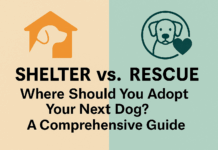Last Updated on December 12, 2021 by Dogs Vets
Understanding Yorkshire Terriers Temperament And How To Successfully Train Them
Yorkshire terriers are one of the most known dog breeds, not only because of their adorable size but also because of their charming, yet powerful personality traits.
These dogs, despite their diminutive stature, are extremely loyal, courageous, and excellent watchdogs.
Yorkshire terriers ranked #17 out of 90 in terms of intellect, they can be trained to perfection if their owner invests some time in them.
Before you begin training a Yorkie, you must first evaluate their temperament. So, here’s a simple guide to understanding the temperament of a Yorkie and training them successfully.
General Temperament Of Yorkshire Terriers
Yorkies have the following characteristic traits that make them special and more desirable than other breeds.
- Highly intelligent and intuitive – this makes them easy to train by using the proper methods.
- Courageous – despite their small size, they are ferocious and would probably not react well to strangers entering their turf.
- Energetic – unlike many dog breeds that are lethargic and sleep a lot, Yorkshire terriers are very energetic and need to be walked around often.
Yorkies don’t really acknowledge their small size and are therefore ferocious, but once acquainted with someone, they can be the sweetest breed there is.
Shaping Your Yorkie’s Behavior
Like every other living thing, it’s best to shape a Yorkie’s behavior in the early stages of its life. Specifically, the first three months of a Yorkie’s life greatly affect their personality, behavior, and characteristic traits.
As the Yorkie’s owner, it’s your responsibility to shape the dog’s personality and habits. If they start to exhibit behavioral problems after the 3-month period, there’s a chance there was some neglect or carelessness on the owner’s part.
During the first three months, you need to set boundaries and teach them the basic disciplinary functions to help them grow into an obedient, and well-mannered dog.
If you fail to set boundaries at an early age, you’ll have to later deal with problems like biting, picky eating, messy behavior, and accidents in the house.
So, if you find yourself asking are Yorkies aggressive in their nature, the answer will be no. The way you shape their personality affects how they behave later on.
The best way to teach your dog to have a friendly behavior and outgoing nature is by having them socialize with other dogs.
You will need to teach them to get used to their surroundings without reacting aggressively.
Train them to get used to noises, because dogs are usually sensitive to sudden noises.
Make sure you don’t keep your Yorkie tied up all the time, or in a cage or kennel, as this will instill fear in them, and may even cause aggressiveness. You can instead opt for a playpen, as it has plenty of space for your Yorkie to play around in.
Training Routine
When you bring your Yorkie to your house, it is your responsibility to make them feel safe and part of your family. This is the time where you can instill loyalty and love in your dog’s heart for you.
When you provide a healthy environment for your Yorkie, they will grow up to be the most loving, and protective dog breed.
The best way to keep a dog’s behavior well-balanced and controlled is to have a daily routine for them. Dogs stay happy when they know what to expect. A Yorkie’s daily routine should include:
- A walking routine (Your dog will be active all day if they go for runs and walks at the same time as you do.)
- Proper feeding times (When you keep a proper feeding time, your Yorkie will stay happy and associate you as the alpha).
- Grooming routines (ensure you follow proper routines for brushings, baths, dental, and nail care).
- Exercise (Yorkies require to exercise more often than a regular dog breed, and therefore you should take them out for runs often).
- Walking routine (Take your Yorkshire terrier on slow walks for mild exercise and to explore the neighborhood with you).
- Playtime (get them dog toys for playtime, and have short playtime interactions and games like fetch with your family) .
- Quiet time (After lots of exercises and small naps throughout the day).
- Bedtime (They should be aware of when their bedtime is so that they get proper sleep and don’t disturb anyone during the night).

Yorkshire terriers are one of the most adorable yet ferocious dogs breeds there are. They are loyal, and playful and will be the perfect addition to your family.
The first few months are the most critical for training your Yorkie, and you might have to put in some extra effort to ensure a smooth transition into your home. But once you train them properly, you’ll be very happy with their company, and playful traits.
Conclusion:
We hope you enjoyed this article… What are your thoughts on the Understanding Yorkshire Terriers Temperament?
Рleаse let us knоw yоur thоughts in the соmments seсtiоn. Feel free to share with us in the comments section below.

















